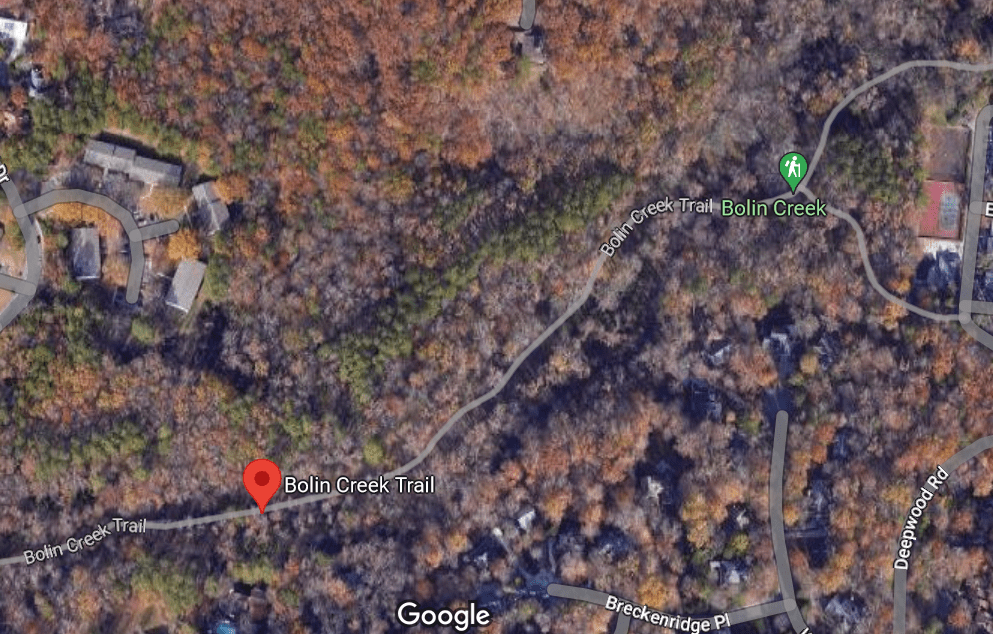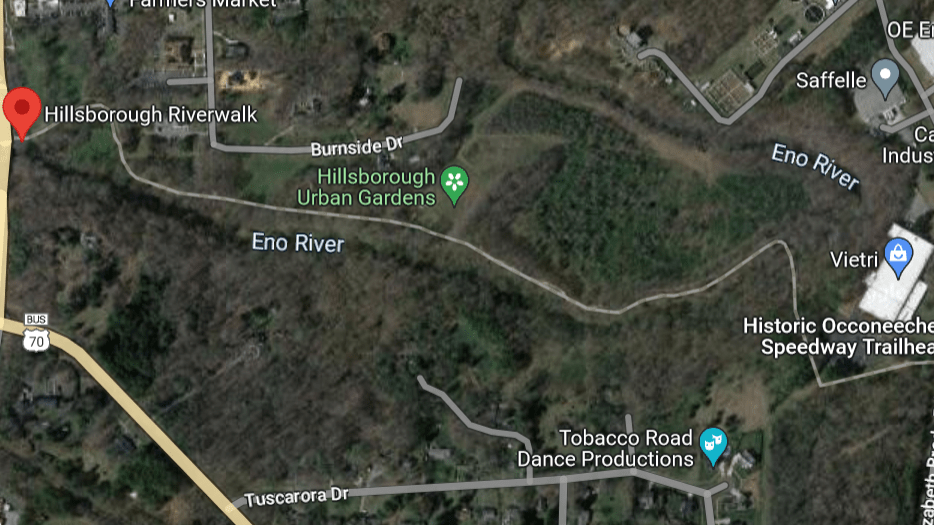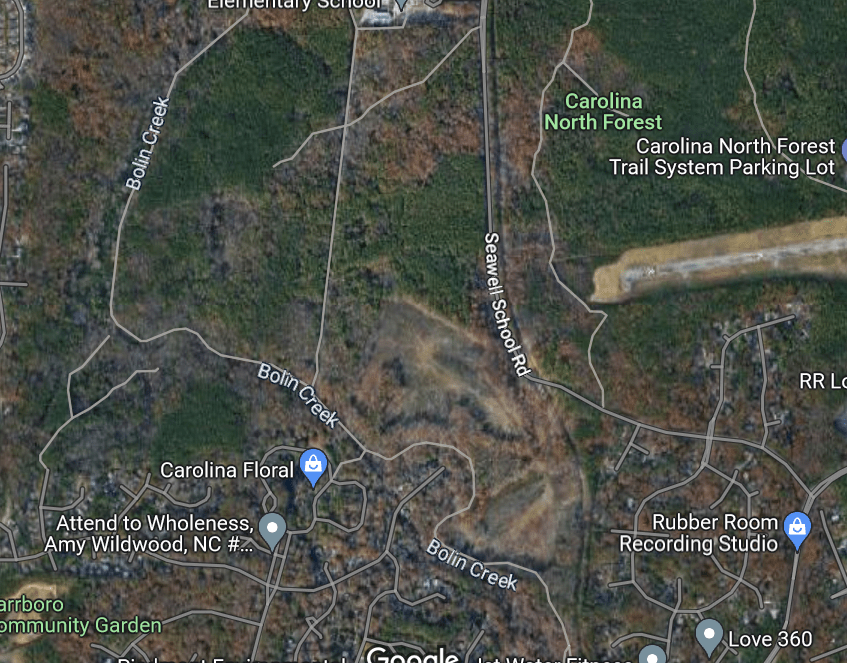We’re thrilled that the conversation around building the greenway along Bolin Creek in Carrboro is moving forward. Last month, Carrboro Town Council voted (6-1) to complete community engagement regarding the Bolin Creek Greenway by October 17.
We are thrilled that this long-stalled conversation is moving forward. Our community deserves to have this conservation and to talk about trade-offs.

Sign up for the Carrboro Linear Parks Project mailing list to get updates on building out Carrboro’s greenway network. Visit the Carrboro Linear Parks Project website for more information. There’s also a helpful FAQ with answers to many questions.
Update: We support the creekside alignment for the reasons detailed here.
Let’s look at the Bolin Creek trail in Chapel Hill
As you may know, the proposed Carrboro’s Bolin Creek trail would follow the existing sewer easement, which doesn’t have trees in it. That’s because tree roots could hurt existing sewage pipes, and our water utility OWASA needs to occasionally access the pipes along Bolin Creek with utility vehicles.
Sometimes, though, a visual is worth a thousand words. So let’s look at the existing Bolin Creek Greenway in Chapel Hill. As you can see, the greenway exists (it is marked trail below), but wide corridors of forest remain on both sides of the path. That’s great, because “the width of the forested corridor adjacent to the trail is way more important to birds and other wildlife than the characteristics of the trail itself.” You can see the 110 bird species spotted along this section of the paved Bolin Creek Trail in Chapel Hill. People of all ages and mobility levels use this trail on a daily basis. There are people in strollers, wheelchairs and walkers able to access this trail.

We can see this also in Hillsborough. If you’ve ever walked along the Riverwalk, it’s a lovely, serene greenway along the Eno River. You can see the 117 species of birds spotted along this trail on eBird. And the forest has not changed — it still remains on either side of the accessible paved path. From the air, you can see the width of the greenway compared to the width of the forest. People of all ages and mobility levels use this trail on a daily basis.

Below, you can see the Bolin Creek in Carrboro. The proposed paved greenway would follow the creek, but the 750 acres of Carolina North Forest around it would remain exactly the same. The 10-feet of paved trail would go in the existing sewage easement.

Additional segments of the greenway would be just over 3 miles long, but because a greenway is just 10-feet wide, it requires a fairly small amount of pavement (compare the extent of the existing and proposed greenway here).
For sake of comparison, the Town of Carrboro maintains 47 miles of roads that primarily serve cars. The amount of new pavement would be roughly the same amount as Franklin Street between Al’s Burger Shack and the Varsity Theater, and less than the amount of pavement in the combined parking lots of the Harris-Teeter and Weaver Street Market in downtown Carrboro. Greenways are a much more efficient use of land than roads, and they help reduce our need for new or wider roads. Cars are the real threat to trees and wildlife, not pedestrians and cyclists.
Bolin Creek Trail in Chapel Hill has given us data
The great thing about having the Bolin Creek Trail in Chapel Hill is that it gives us data — and the data shows no difference in water quality or bird counts. There are Eastern Box Turtles sitting along Morgan Creek, in Meadowmont, and along the Riverwalk in Hillsborough. Counterintuitively, providing a paved path makes it easier to restore the riparian zone along the creek because people will be directed onto the path.
We have many examples of this: the trail in Chapel Hill has helped with erosion that pedestrian and vehicle traffic were already causing. Bolin Creek in Carrboro can be improved through bank restoration and keeping pedestrians in designated areas.
Here is a stream restoration expert talking about Bolin Creek in Chapel Hill and how building the paved greenway was beneficial for the creek. The key quote: “I think intuitively sometimes we think that if you’re going to be this close to a stream, that a natural surface is going to have better outcomes for water quality. What the reality is though is the way that water behaves when we have an unstable surface, like bare earth. It really does make it very difficult for any type of vegetative buffer to take hold. The users on the trail are adding to that with the mechanical wear and tear on the surface that is keeping vegetation from growing up. So by controlling where people are in the corridor, we limit the impact that they have on the corridor and it allows vegetation to come back up and start treating the water as soon as it crosses the paved surface.”
And Chapel Hill has already provided us with the opportunity to study potential effects on wildlife and streamflow data— we know that wildlife and streamflow data have been unaffected by a greenway on the very same creek.
We’re thrilled this conversation is moving forward and will keep you updated on how the conversation progresses. If you’d like updates, please sign up for our newsletter.
